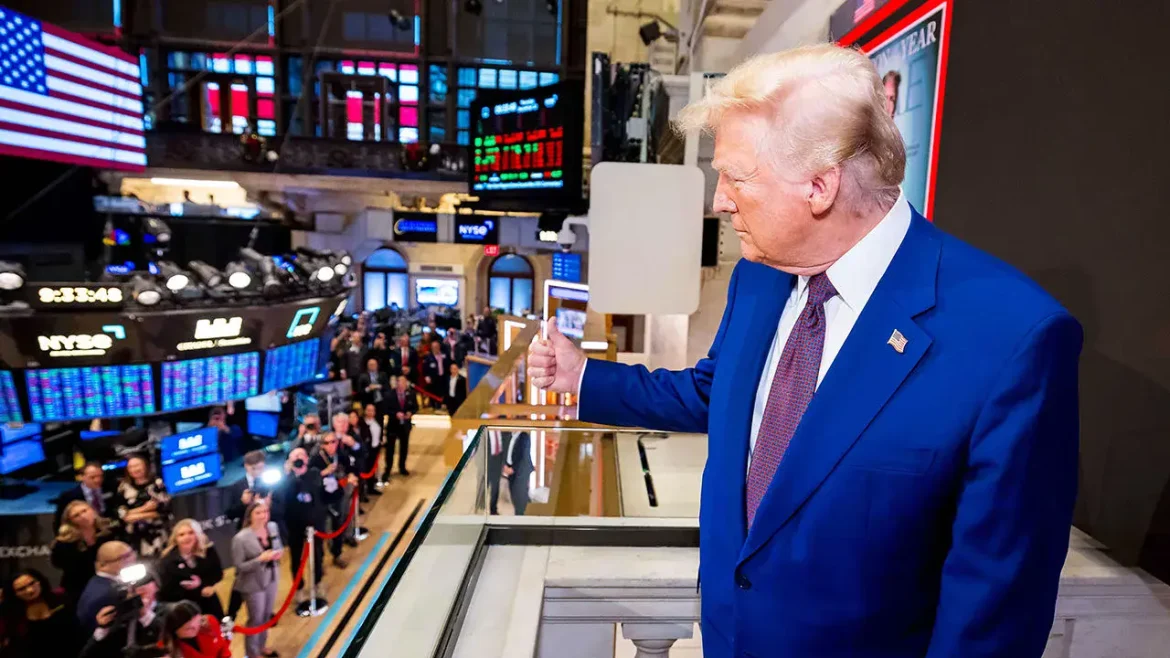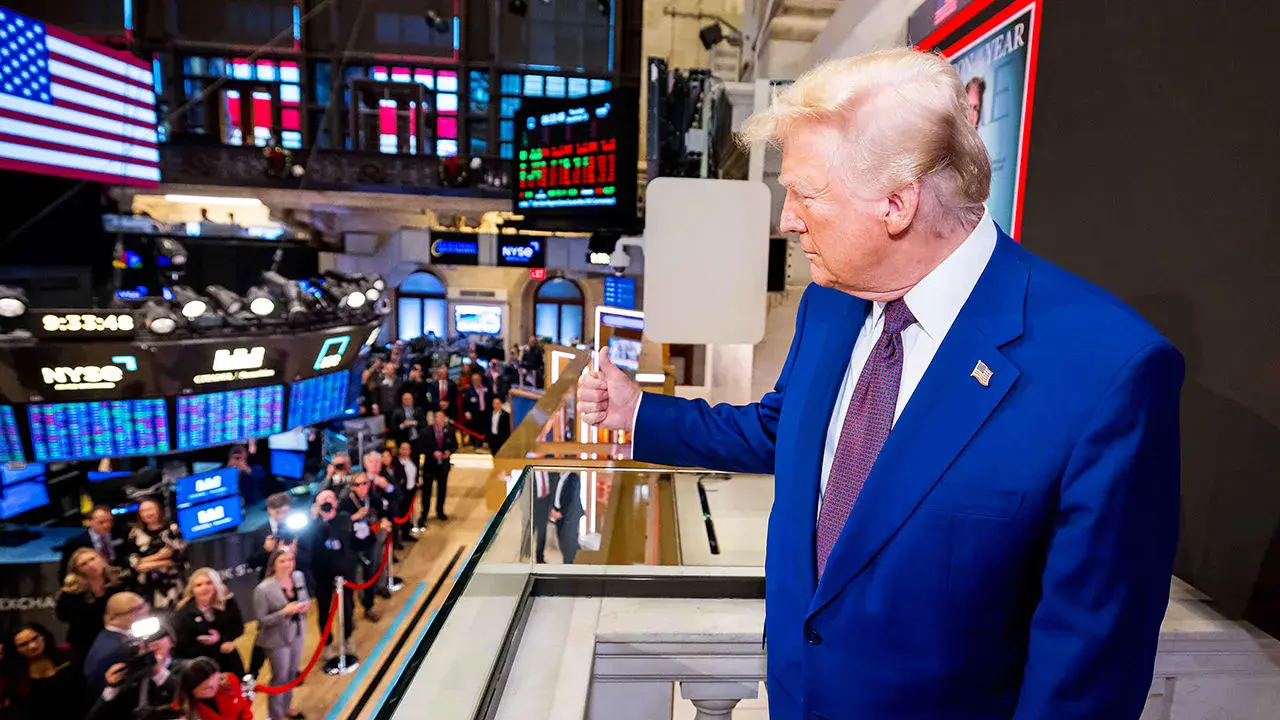Decoding the Downturn: An Analysis of the US Stock Market Fall
Introduction: The Fragile Pulse of the Market
The US stock market, often hailed as the heartbeat of global finance, has recently exhibited erratic rhythms, sending shockwaves through investor confidence and economic forecasts. The dramatic erosion of trillions of dollars in market value within days is not merely a statistical anomaly but a symptom of deeper systemic vulnerabilities. To comprehend these downturns, one must dissect the multifaceted forces at play—from political decisions to technological disruptions, and from macroeconomic trends to psychological investor behavior.
The Trump Era: A Double-Edged Sword
The presidency of Donald Trump was a period of stark contrasts for the stock market. Policies aimed at bolstering domestic industries often backfired, creating waves of uncertainty. The imposition of tariffs, for instance, was intended to protect American manufacturers and renegotiate trade agreements. However, the unintended consequences were swift and severe. Investors, wary of the economic fallout from trade wars, reacted with panic, leading to massive sell-offs. One such event saw the market shed $4 trillion in value, underscoring the delicate balance between protectionism and market stability.
Beyond trade policies, administrative decisions also played a pivotal role in market volatility. The firing of a top statistician over a dispute regarding jobs data, for example, sparked controversy and coincided with a $1.1 trillion loss in market value. Such incidents eroded trust in government data, further destabilizing investor confidence. The Trump era thus serves as a cautionary tale about the delicate interplay between political decisions and financial markets.
The DeepSeek AI App: A Tech Sector Earthquake
The recent emergence of China’s DeepSeek AI app has sent shockwaves through the tech sector, erasing over $1 trillion in market capitalization in a matter of days. This event highlights the interconnectedness of global markets and the tech industry’s vulnerability to disruptive innovations and geopolitical tensions. The DeepSeek AI app, perceived as a potential threat to US tech giants, triggered a wave of panic among investors, leading to a rapid decline in the value of major tech stocks like Nvidia.
This reaction underscores the importance of innovation, competition, and regulatory oversight in the tech industry. As artificial intelligence continues to advance, companies and governments must navigate the challenges and opportunities it presents responsibly. Failure to do so could lead to further market disruptions and unfair competition, ultimately harming both investors and consumers.
The Magnificent Seven: A Double-Edged Sword
The “Magnificent Seven”—Apple, Microsoft, Amazon, Alphabet (Google), Nvidia, Tesla, and Meta (Facebook)—have become the backbone of the US stock market. These tech titans account for a substantial portion of the market’s total value, making their performance critical to overall market health. However, this concentration also poses significant risks. A sell-off in these large-cap stocks can have a disproportionate impact on the broader market, as seen in a recent trading session where the market lost $1.1 trillion in value, with the Magnificent Seven alone accounting for over $750 billion of that loss.
This concentration risk highlights the need for diversification and a balanced approach to investment. While the Magnificent Seven have driven market growth in recent years, their dominance also makes the market more vulnerable to shocks. Investors must remain vigilant and consider the broader economic landscape when making investment decisions.
Macroeconomic Factors: The Invisible Hand
Beyond specific events and industry trends, broader macroeconomic factors and external shocks play a significant role in stock market declines. Interest rate hikes, inflation concerns, and geopolitical instability can create uncertainty and volatility in the market. For example, the Federal Reserve’s decisions regarding interest rates can significantly impact investor sentiment and borrowing costs, influencing stock valuations.
Significant external shocks can also disrupt market stability. Data over the past few years shows stability in portfolio flows since the reforms of March 2024, even in the face of significant external shocks. Such resilience highlights the importance of sound economic policies and regulatory frameworks in mitigating the impact of unforeseen events. Investors must remain informed about these macroeconomic trends and adapt their strategies accordingly.
The Role of Investor Sentiment: Fear and Greed
Investor sentiment and market psychology are powerful forces that drive stock market movements. Fear, greed, and herd behavior can amplify market swings, leading to both booms and busts. During periods of uncertainty or market decline, investors may panic and sell off their holdings, further exacerbating the downward trend. Conversely, during periods of optimism, investors may become overly enthusiastic and drive stock prices to unsustainable levels.
Understanding investor sentiment and market psychology is essential for navigating market volatility and making informed investment decisions. Investors should avoid emotional reactions and instead rely on sound analysis and long-term strategies. By maintaining a disciplined approach, investors can mitigate risk and achieve long-term financial goals.
The Bitcoin Enigma: A New Frontier
While not directly related to the traditional stock market, the rise of Bitcoin and other cryptocurrencies has introduced a new dynamic to the financial landscape. Although there is no direct correlation, the increasing popularity and acceptance of Bitcoin as an alternative asset class has the potential to influence investor behavior and capital flows. Further research on Bitcoin policy and its macroeconomic implications is needed to fully understand its potential impact on the stock market and broader economy.
As the financial world continues to evolve, investors must remain open to new opportunities and challenges. The rise of cryptocurrencies is just one example of the changing landscape, and investors must adapt their strategies to navigate this new frontier.
Conclusion: Charting a Course Through Turbulence
The US stock market’s recent falls, marked by trillions of dollars in value erosion, underscore the complex and interconnected nature of the global financial system. Factors ranging from trade policies and personnel decisions to technological disruptions and macroeconomic trends can all contribute to market volatility.
As investors navigate these uncertainties, it is crucial to maintain a long-term perspective, diversify their portfolios, and avoid making impulsive decisions based on short-term market fluctuations. Understanding the underlying drivers of market movements and adopting a disciplined approach to investing can help mitigate risk and achieve long-term financial goals.
By carefully analyzing the factors that contribute to market downturns and remaining informed about the evolving economic landscape, investors can navigate the uncertainties and capitalize on opportunities in the ever-changing world of finance. The path forward may be fraught with challenges, but with the right strategies and a clear understanding of the market’s dynamics, investors can chart a course through the turbulence and emerge stronger on the other side.





